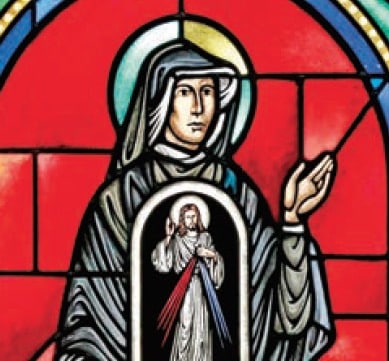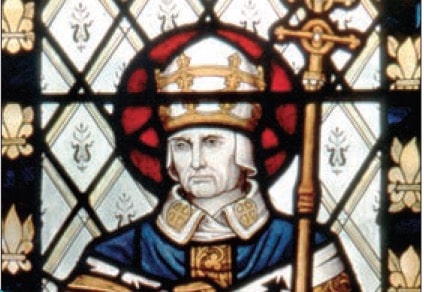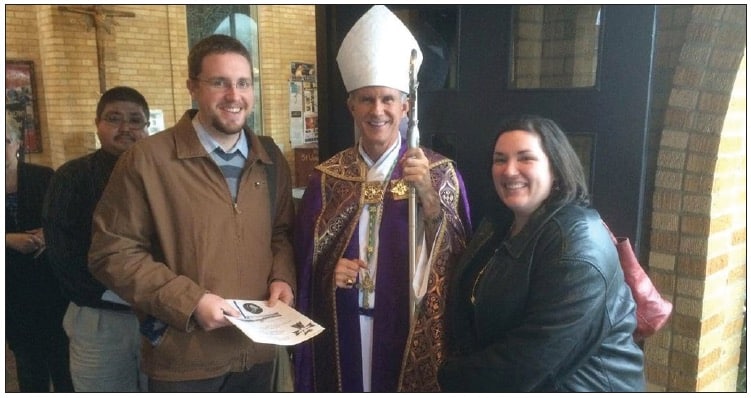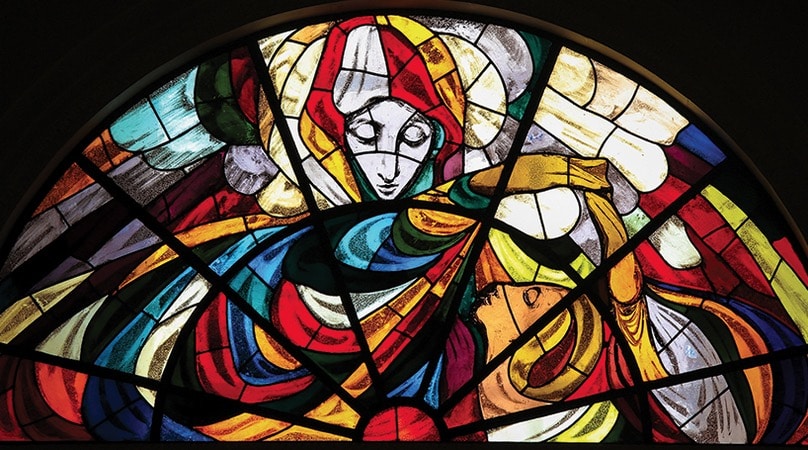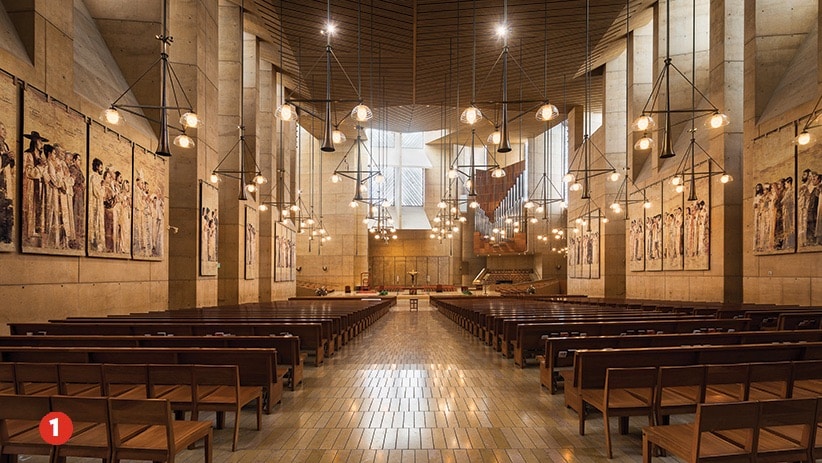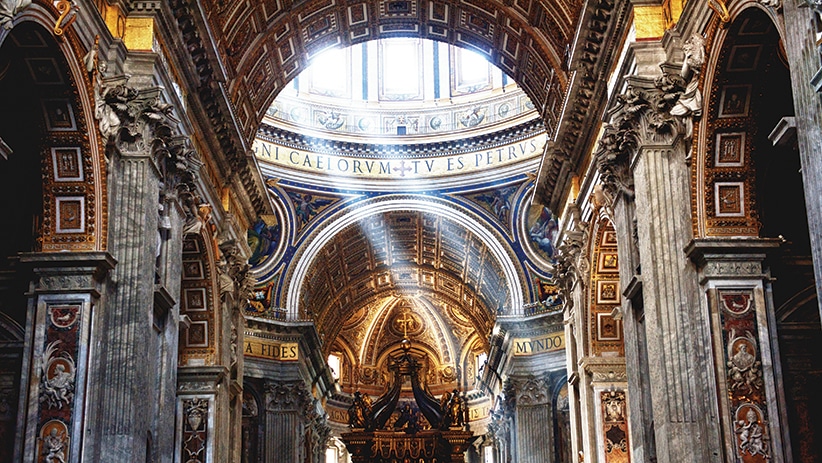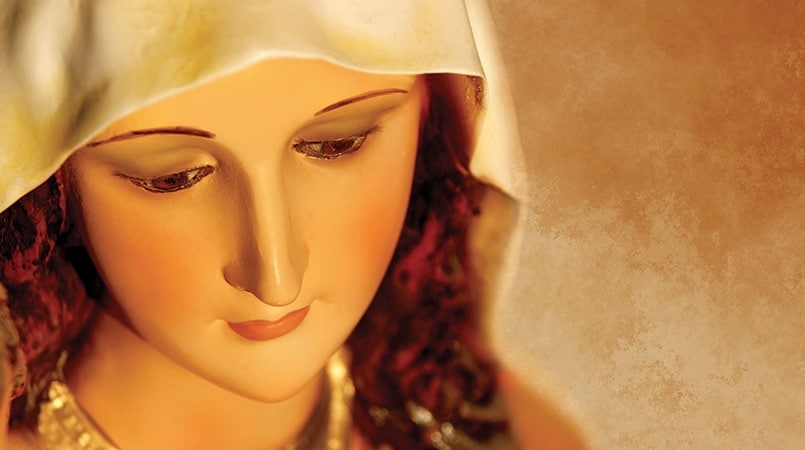Pope Francis chose as the motto for the Year of Mercy the phrase, “Merciful like the Father” (Misericordiae Vultus, No. 14). He wants to encourage all of us who believe in God to share with others the mercy we have received from him, which comes to us through the inexhaustible source of divine love poured forth in Jesus’ life, death and resurrection.
The pope is not saying anything new. God has sent messengers throughout salvation history in order to make his mercy known and proclaimed. Repetition is necessary, however, because it seems that many of us are hard of hearing. To Jeremiah, God says, “From the day that your ancestors left the land of Egypt even to this day, I kept on sending all my servants the prophets to you. Yet they have not listened to me nor have they paid attention” (Jer 7:25-26). Even when God sent his son, Jesus, people refused to listen and still do (cf. Mt 21:37-38). And how does God respond? Scrap the whole project and start again? Rain down fire and brimstone? No; God chooses mercy and sends another messenger to make it known. One such messenger is St. Faustina. He spoke to her just as he did the prophets of old and gave her a mission: “I am sending you with my mercy to the people of the whole world. I do not want to punish aching mankind, but I desire to heal it, pressing it to my merciful heart” (Diary, No. 1588).
Simple faith
St. Faustina is a veritable poster child for the Year of Mercy because she manifested mercy throughout her short life. Born Aug. 25, 1905, (d. Oct. 5, 1938), she was the third of 10 children. Her parents, Stanislaw Kowalski and Marianna nee Babel, lived in a small village named Glogowiec. They were poor farmers and pious people. They taught their children that prayer came first, and work followed. Faustina imbibed the instruction with unusual enthusiasm for a child. She could be found praying late at night after everyone else had gone to bed. When she had a break from chores, Faustina would spend the time at the local church. Even as a child she showed concern for the poor. Rounding out her personality was an infectious disposition that featured joy and peace.
Faustina’s character is an admirable one, but it is hardly the kind that gets much attention outside of the home. Her family and neighbors could have never predicted that Faustina would be known worldwide after her death. She grew up just as one would expect a poor girl from a farming family would: with no fanfare and very little else in terms of material goods. What she lacked in worldly wealth, however, contrasted strongly to her spiritual riches. At age 7, she already expressed a desire to be a nun, revealing a generous spirit born of a strong habit of prayer. She entered school at age 12, but only for three years because room had to be made for younger students. After her brief schooling, she worked as a domestic for different families in neighboring towns, impressing them by her conscientiousness and sense of peace. During this time, Faustina continued to seek permission from her parents to enter a convent, but they said no because her wages were needed to help support the family. She tried to stifle the call to a religious vocation with “amusements,” like going to dances (Diary, No. 8), but it could not be silenced. Around 1924, Faustina could no longer ignore the call she discerned to be from God and, without asking her parents, left for Warsaw in search of a convent.
Accepted by the Master
Faustina’s search had her knocking on many convent doors, and all but one remain closed. At each convent — even the one that would eventually accept her — the first impression on the part of the sisters was the same: “She looked unremarkable, slightly delayed age-wise, rather feeble figure, a maidservant and cook by profession, no dowry, not even the most meager of trousseaus. Unexceptional, a meager little creature, poor, nothing special about her, not very promising.” Thus was she dismissed. The lack of a dowry seemed to be the major factor in her unacceptability. The one convent that did accept her had the good sense to let Jesus in on the decision. Mother Michaela Moraczewska, superior of the Warsaw house of the Congregation of the Sisters of Our Lady of Mercy, interviewed Faustina and was unimpressed. However, she asked Faustina to ask the master of the house if he would accept her. Faustina went directly to the chapel to ask Jesus in prayer of his decision, and she reported to Mother that he did accept her, and therefore so did Mother. Perhaps she had in mind St. James’ letter in which he writes: “Did not God choose those who are poor in the world to be rich in faith and heirs of the kingdom that he promised to those who love him?” (Jas 2:5).
For her part, Faustina waited patiently. Despite the many rejections, she persevered. Others might have given up or asked God to kindly point out the exact door upon which he wished them to knock. Faustina remained at peace and trusted that God’s will would become known in good time. Even when Mother Michaela accepted Faustina into the Sisters of Our Lady of Mercy, it was not immediate. She asked Faustina to work another year in order to provide a modest trousseau for herself, which she did.
Deeper prayer
On Aug. 1, 1925, Faustina entered the Warsaw convent of the Sisters of Our Lady of Mercy. She would remain with the sisters until her death in 1938, living at various houses owned by the order and doing the same work she had done as a domestic. Indeed, her exterior life was filled with the same daily tasks as her childhood had been: prayer and work. Her interior life, on the other hand, was becoming richer in the experience of prayerful communion with God.
| A Model of Faith |
|---|
|
In this Year of Mercy, St. Faustina’s example as a messenger of Divine Mercy reminds us to:
– Make time for prayer. Faustina was taught to pray first and work second. We can begin all our tasks with a simple prayer, such as “Jesus, let this be for your greater glory.”
– Be joyful. Remembering to thank God and others for the good things we have received.
– Trust in Jesus. In trying to discern and do God’s will, we can remember the prayer on the image: “Jesus, I trust in you.”
|
After only a few weeks in the convent, Faustina heard from Jesus that he wanted her to pray for souls in purgatory, and he continued to make his will known to her. Faustina received many gifts from God, but she spoke of them only to her superiors and confessors. At times, she was filled with consolation; other times she saw only darkness. Always, she completed her daily tasks with good cheer, trusting that God was ever-present, and her fidelity in little things led God to entrust her with a mighty mission: to be the apostle of Divine Mercy.
On Feb. 22, 1931, Faustina experienced a physical vision of Jesus who told her to paint a picture of him. When she told her superior, Faustina was sent her to her confessor. He sent her back to the superior. They did not know what to do, so the painting was delayed. Finally, artist Eugeniusz Kazimirowski finished the painting according to Faustina’s instructions in 1934. The now ubiquitous image of Jesus wearing a white gown with two rays (one red, one white) coming forth from his heart, and with the words “Jesus, I trust in you” at the bottom edge, was first displayed during Holy Week in 1935 in the Shrine of Our Lady of Ostra Brama in Vilnius, Lithuania. Jesus told Faustina that the rays represent the blood and water that flowed from his side on the cross, poured out for the world’s redemption.
Today, millions of people have adopted the practices Faustina made known: venerating the image of Divine Mercy, celebrating the feast of Divine Mercy on the first Sunday after Easter, praying the chaplet of Divine Mercy and keeping holy the hour of Jesus’ death at 3 p.m.
Faustina is a model of God’s mercy. Indeed, her entire life is an act of mercy toward her neighbors, for she could have refused God’s will and sought solace in the world’s amusements. Instead, she dedicated herself to following God’s call and making known to us his mercy that we might accept the gift. May we all heed the message God entrusted to her.

